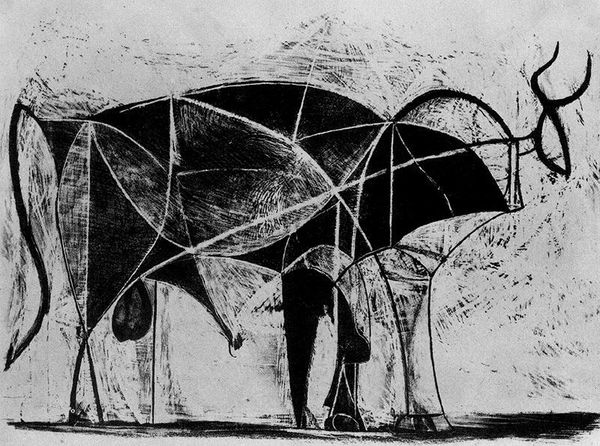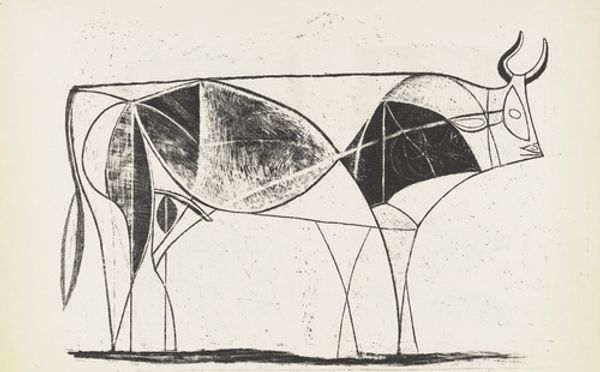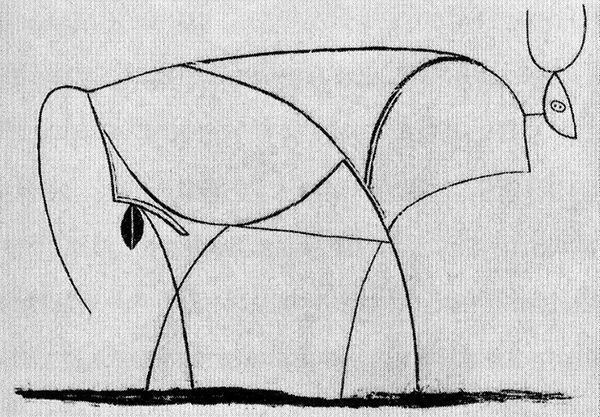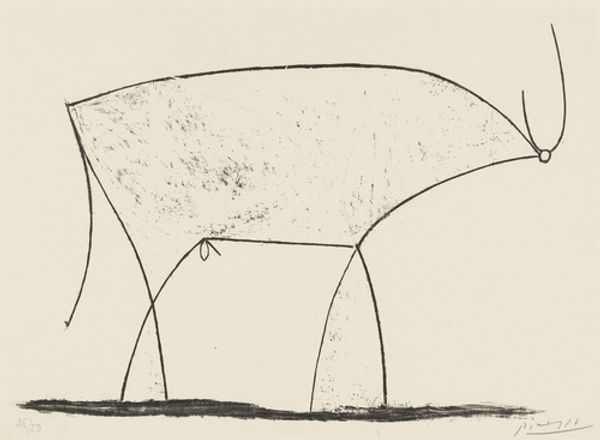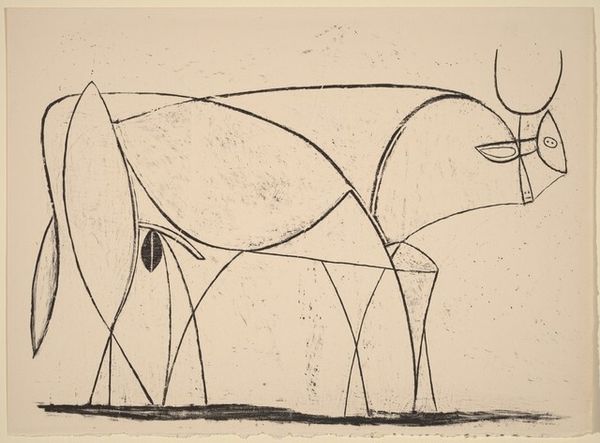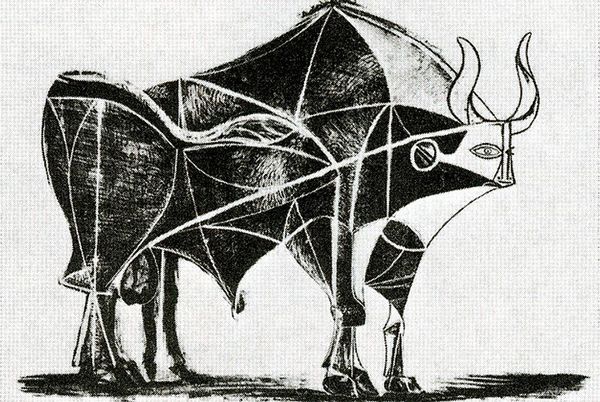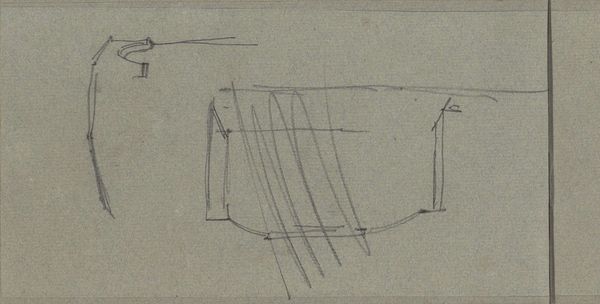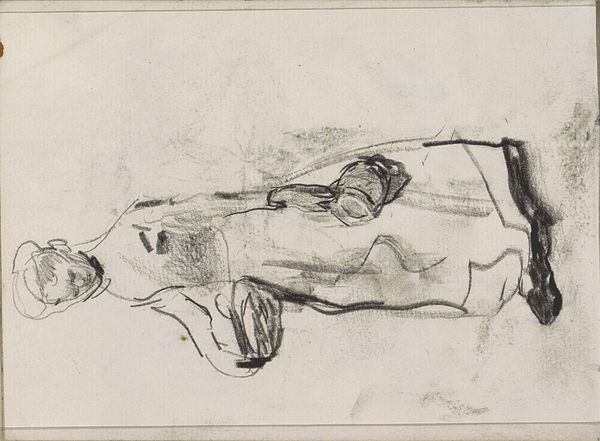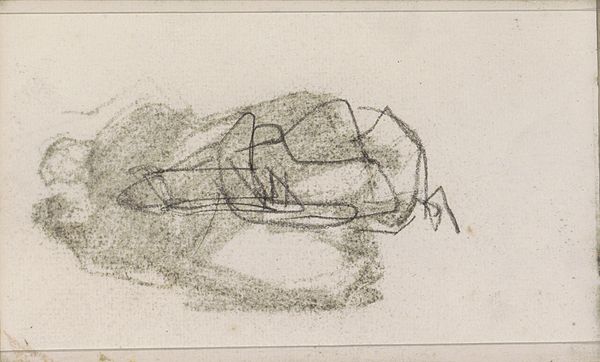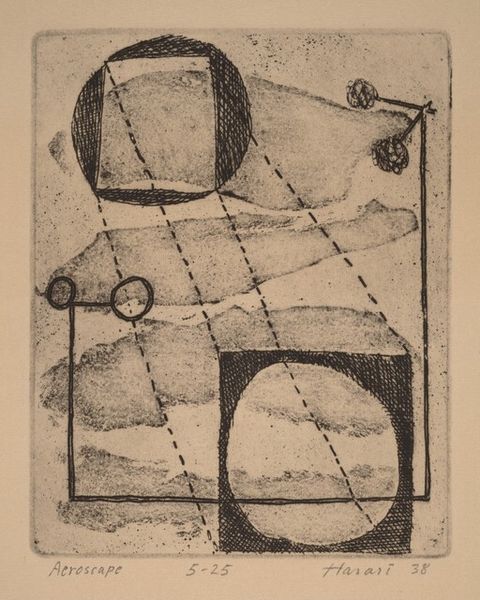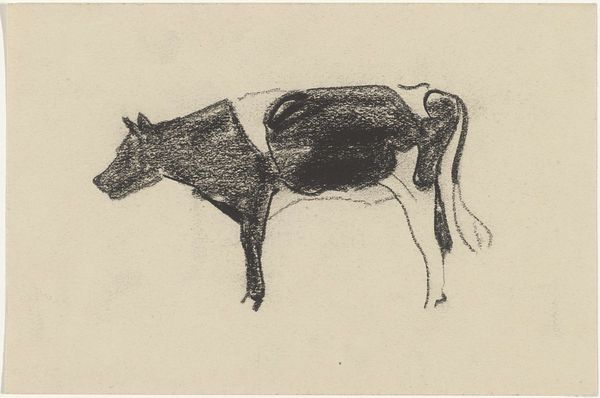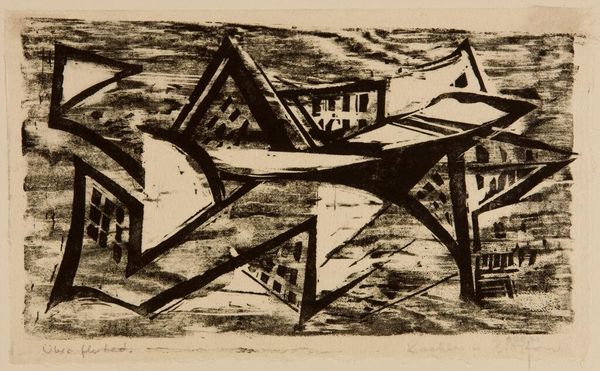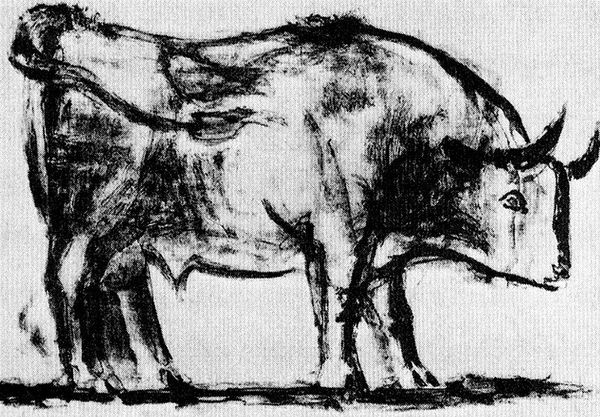
drawing, lithograph, print
#
drawing
#
cubism
#
animal
#
lithograph
# print
#
figuration
#
abstraction
#
line
Dimensions: 32.6 x 44.4 cm
Copyright: Pablo Picasso,Fair Use
Curator: Picasso's lithograph "Bull (plate VII)" from 1945 strikes me immediately with its starkness, the way it feels reduced to the barest essence of form. Editor: I see that too. There's an incredible confidence in the line work, a kind of brute simplicity that still manages to convey power. Tell me more about this particular print from the series. Curator: The piece is part of a series of eleven lithographs, all explorations of a bull. What's interesting here is that Picasso begins with a representational image, and through each plate, progressively simplifies and abstracts the form until, by the final image, the bull is almost entirely reduced to geometric lines. It’s held by the Staatsgalerie Stuttgart in Germany. Editor: Fascinating! I wonder if this simplification reflects the socio-political climate of 1945. After enduring war and witnessing unprecedented destruction, perhaps Picasso was striving for an elemental visual language that could cut through ideological complexities, like reducing the complex power of an animal to simple signs and components? Curator: That’s a compelling idea. One could argue the removal of excess, or decoration, mirrors a removal of the excess consumption tied to earlier pre-war generations. Even the limitations inherent in lithography—its reliance on basic materials—reinforce a stripping away of extravagance, reflecting the constraints of the time. Editor: Exactly! And bulls themselves carry significant weight in Spanish culture; they’re symbols of virility, strength, and even sacrifice. By distilling the bull to its fundamental components, is Picasso perhaps democratizing this symbol? Releasing its inherent power for all people, beyond the confines of traditional symbolism tied to cultural identity and oppression? Curator: That’s a rich reading. It acknowledges the role of the animal within cultural contexts and interprets the means of production—lithography itself—as contributing to potential socio-political interpretations of that time. Editor: Thinking about these layered meanings—labor, context, medium, cultural significance— it encourages us to confront history and engage critically with the artist’s vision. What do you take away as your final impression? Curator: For me, it comes back to process, seeing how Picasso worked with the limitations and affordances of the printmaking medium. His strategic reduction is ultimately additive in meaning.
Comments
No comments
Be the first to comment and join the conversation on the ultimate creative platform.
